For your summer lawn success, we’ve put together all the info and tips you need. Whether you have a cold or warm-season lawn, you’re covered.



Heat/dry stress is often misdiagnosed as a fungus or other issue. Signs of it include:
Both warm-season and cool-season turf are most susceptible when they’re growing in poor conditions (i.e., shade, compact soil, etc.) and/or struggling to recover from a harsh winter. Otherwise, the experience between the two differs in key ways.
Grasses like Fescue will usually go into a semi-dormant state and shut down through the next two months. Fortunately, most turf will bounce back with help from cooler temperatures and rainfall. However, it’s still important for them to be with kept healthy with proper fertility and a 3.5” to 4.0 mowing height before, during and after this time.
Many people are under the impression that warm season turf lawns like Bermuda and Zoysia cannot experience heat/dry related-injury. However, warm season turf grasses are just more tolerant to it than cool-season turf. As such, they don’t go semi-dormant and generally recover even better than cool-season turf.
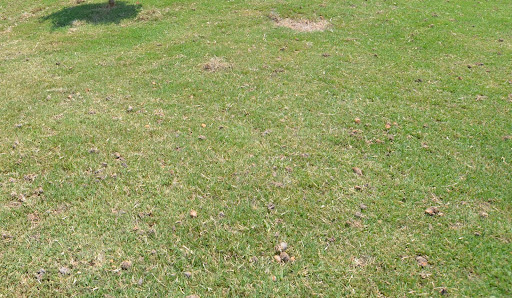
Once warm season turf like Bermuda, Zoysia or Centipede is actively growing, it’s time to consider core aeration. Completing this annual management practice between June and August can drastically improve the quality of your overall lawn. It involves creating small holes in your soil (done by removing thatch and soil), which is especially helpful for your lawn if it received winter damage.
Core aeration will:
Yellow Nutsedge is summer perennial that flourishes from April/May to around September/October. During this time, it’s a very prolific and difficult weed to control in many lawns and natural areas. Rather than being a broadleaf or grassy weed, it’s actually part of the sedge family. As such, post-emergent broadleaf weed controls, for weeds like clover and dandelions, will not help control it.
Yellow Nutsedge reproduces from tubers under the soil and can spread by rhizomes (underground stems). Each plant can produce hundreds of tubers during its growing season, which can become new plants in the years to come.
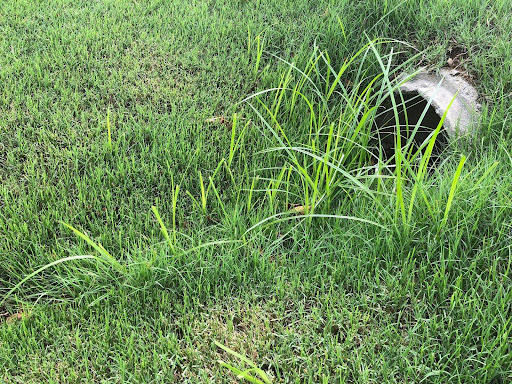
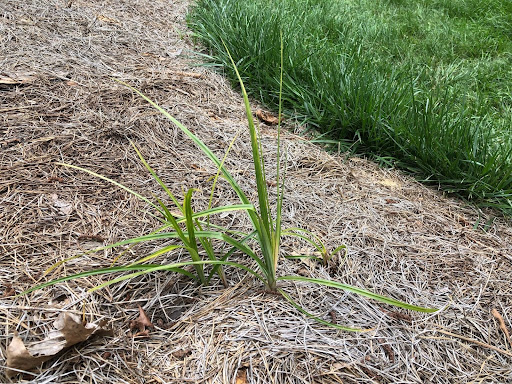

Yellow Nutsedge will have a triangle stem that’s easily felt when you twirl it between your thumb and forefinger. It will also grow much faster than your existing turf and will have a thin, shiny appearance.
There are only a few products available for controlling Nutsedge, and all of them require frequent applications over multiple years to offer acceptable control. Fairway Green utilizes these products as part of the third and fourth rounds of our turf management programs.
Virginia Buttonweed is a perennial weed that’s very difficult and prevalent in all turf types. It roots deeply and thrives in both poorly drained and overly moist lawns, either due to excessive rainfall or frequent irrigation. This weed spreads by rhizomes (underground stems), as well as by stem pieces cut and distributed during mowing or string trimming. If left uncontrolled, this mat-forming weed can smother out turfgrass.


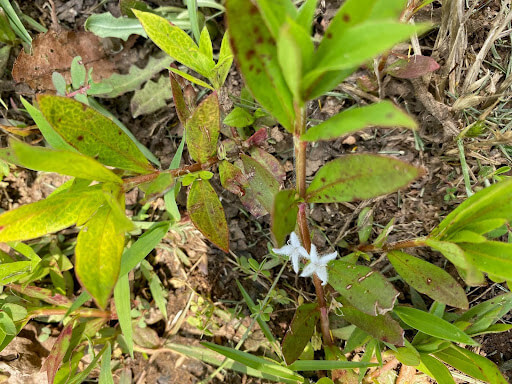
Virginia Buttonweed produces white flowers and shiny, dark green, lance-shaped leaves. The leaves are oppositely arranged on the stems and have no petioles (stalks that attach leaves to stems). By late summer, leaves may turn yellow-green due to a viral infection. The flowers are tubular and white, with four petals forming a four-pointed star.
Managing Virginia Buttonweed in a lawn may require two or more years of post-emergence herbicide applications. Herbicide applications also help control the young seedlings growing in the lawn and can prevent large mats of growth that can smother out turfgrass by late summer. In late summer, older Virginia Buttonweed plants are much more tolerant of selective herbicides, making controls less effective.
If you suspect you are dealing with Virginia Button, contact us for a lawn analysis. Your Fairway Green technician will issue a service call to return in about 14 days if we find Virginia Buttonweed in your lawn.
Summer is turf-disease season for cool-season grasses, especially Brown Patch Fungus. While it’s common, it can also be devastating. It typically starts in late April/early May due to certain climate factors. This includes when temperatures go above 75 degrees with high atmospheric moisture. This moisture can be in the form of rainfall, irrigation or humidity.
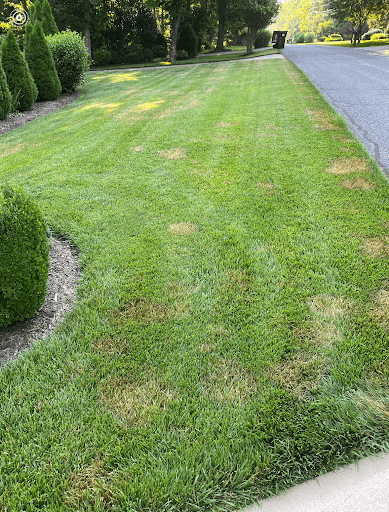
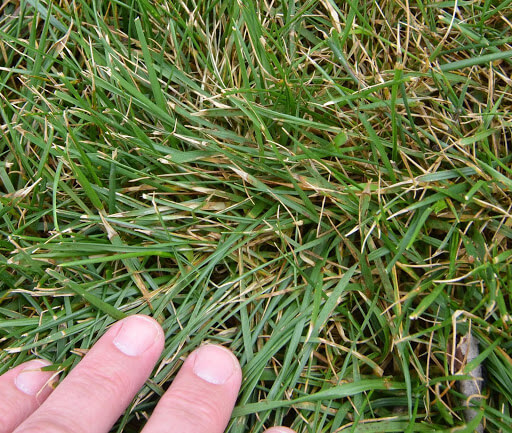

The easiest way to identify Brown Patch Fungus is to stand away from your lawn. Then, look for a shadow appearance on it or browning circles. Once you identify these, look at the leaf blades for tan or brown lesions. If you see these, you more than likely have Brown Patch Fungus. Just a note that drought stress can be mistaken for this fungus, too (drought stress makes leaf blades fold at the center, giving them a straw-like appearance).
Applying fungicides preventively offers better control and less turf damage vs. curative fungicides. An application will control fungus for approximately 25-28 days at a time. Due to the high humidity level in NC, Brown Patch can go active again after this time. Many people are utilizing our preventative fungicide program to prevent major damage to their turf and take the guesswork out of when to do applications.
For even more info, be sure to read our blog on Brown Patch Fungus.
Proper mowing height is essential for proper turf health, performance and weed management. Here’s how to keep your specific lawn type at the height it needs to be.
For cool-season turf, mowing season is officially underway. Proper mowing height will help you control and prevent weeds. For Fescue, research has proven that maintaining a mowing height of 3½ “- 4” can drastically reduce Crabgrass. Mowing at this height will also help promote healthy turf and hold back broadleaf weeds.
Many warm-season turf lawns struggle to thrive due to improper mowing heights. Mowing your type of warm-season turf properly will drastically improve its overall quality and appearance.
We all know Mosquitos transmit diseases like West Nile Virus, Encephalitis and Chikungumya. Now, we have another one to worry about: Zika!
Fairway Green’s Mosquito program is tailored to your lawn’s specific needs and can consist of up-to eight total applications. Each applications will offer control for approximately 25 days. One-time applications are also available and great for special outdoor events.
Give yourself and your family peace-of-mind today! Receive a no-obligation price quote and $10.00 of your first application.*
*New customers only, cannot be combined w/other offers.